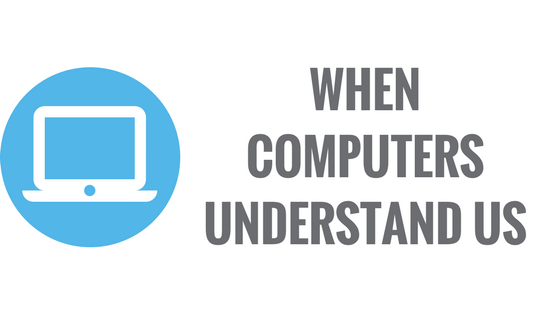When Computers Understand Us
February 27, 2018 •Summit Consulting

.png?width=320&name=Untitled%20design%20(39).png) This blog post was written by Luke Wallace, Tim Book, and Avinash Tamby.
This blog post was written by Luke Wallace, Tim Book, and Avinash Tamby.
Computers play a significant role in making our lives more productive. In the beginning, we used computers to make math easier. Today, we use computers for just about everything that’s quantitative, from calculating tips at a restaurant to simulating NASA missions. Despite all the advancements made in computing, it’s still very difficult to get them to take meaning from our words. Case in point, if you were to analyze my Facebook posts and take my word at face value, you’d find I get really excited for Washington D.C.’s rush hour traffic.
Why is it hard for computers to process emotions that a child can understand? Perhaps it’s because we didn’t need them to. We built computers to replace the tedious work of processing data, that is clean, organized, and, more importantly, measurable. But times have changed. Computers are now used in all aspects of our lives. We use them to tell us what movies to watch, which purchases to make, and we’re even starting to let them drive! But can they understand us?
How do computers analyze our words?
For written communication, the field of Natural Language Processing (NLP) is a solution. NLP makes predictions based on text, and we actually use it every day – things like spellcheck and autocorrect are classic applications (albeit boring ones).
Beyond basic functions, advances in computation have opened NLP up to a wide array of applications. One example is Topic Modeling. In short Topic Modeling allows a computer to detect what people are talking about by grouping words into topics. For example, if we were to push my Facebook posts through a Topic Model, it would find my posts can be bucketed into: “traffic”, “Onion articles”, and “dad jokes”.
How can a computer analyze emotion?
Another popular application of NLP is Sentiment Analysis, which detects if someone is having positive, negative, or neutral emotions about the topic they are writing about. A human reader can easily tell if someone is happy or upset from freeform text, but what if there are thousands of entries? Millions? It might seem strange that a computer can detect human emotion using text alone, but Sentiment Analysis algorithms perform with astonishing accuracy.
In fact, because of its reliability, many companies use Sentiment Analysis on Twitter data to determine public attitude towards their product. With over 500 million tweets, this gold mine of marketing data was all but useless without NLP. In an earlier post, Summit’s Ed Dieterle discussed other means of measuring engagement with machine learning.
Where is NLP going?
Everyone is excited about what’s next in NLP, and it’s not just the big tech firms. Of course, Amazon and Apple are making big strides with Alexa and Siri, but the advances in NLP have broad reaching applications, and we’re only scratching the surface. The transition from “machine learning” to “machine understanding” still requires a major technological leap, but the progress being made every day adds a sophisticated tool to business’ analytics arsenal.
Get Updates
Featured Articles
Categories
- affordable housing (12)
- agile (3)
- AI (4)
- budget (3)
- change management (1)
- climate resilience (5)
- cloud computing (2)
- company announcements (15)
- consumer protection (3)
- COVID-19 (7)
- CredInsight (1)
- data analytics (82)
- data science (1)
- executive branch (4)
- fair lending (13)
- federal credit (36)
- federal finance (7)
- federal loans (7)
- federal register (2)
- financial institutions (1)
- Form 5500 (5)
- grants (1)
- healthcare (17)
- impact investing (12)
- infrastructure (13)
- LIBOR (4)
- litigation (8)
- machine learning (2)
- mechanical turk (3)
- mission-oriented finance (7)
- modeling (9)
- mortgage finance (10)
- office culture (26)
- opioid crisis (5)
- Opportunity Finance Network (4)
- opportunity zones (12)
- partnership (15)
- pay equity (5)
- predictive analytics (15)
- press coverage (3)
- program and business modernization (7)
- program evaluation (29)
- racial and social justice (8)
- real estate (2)
- risk management (10)
- rural communities (9)
- series - loan monitoring and AI (4)
- series - transforming federal lending (3)
- strength in numbers series (9)
- summer interns (7)
- taxes (7)
- thought leadership (4)
- white paper (15)


